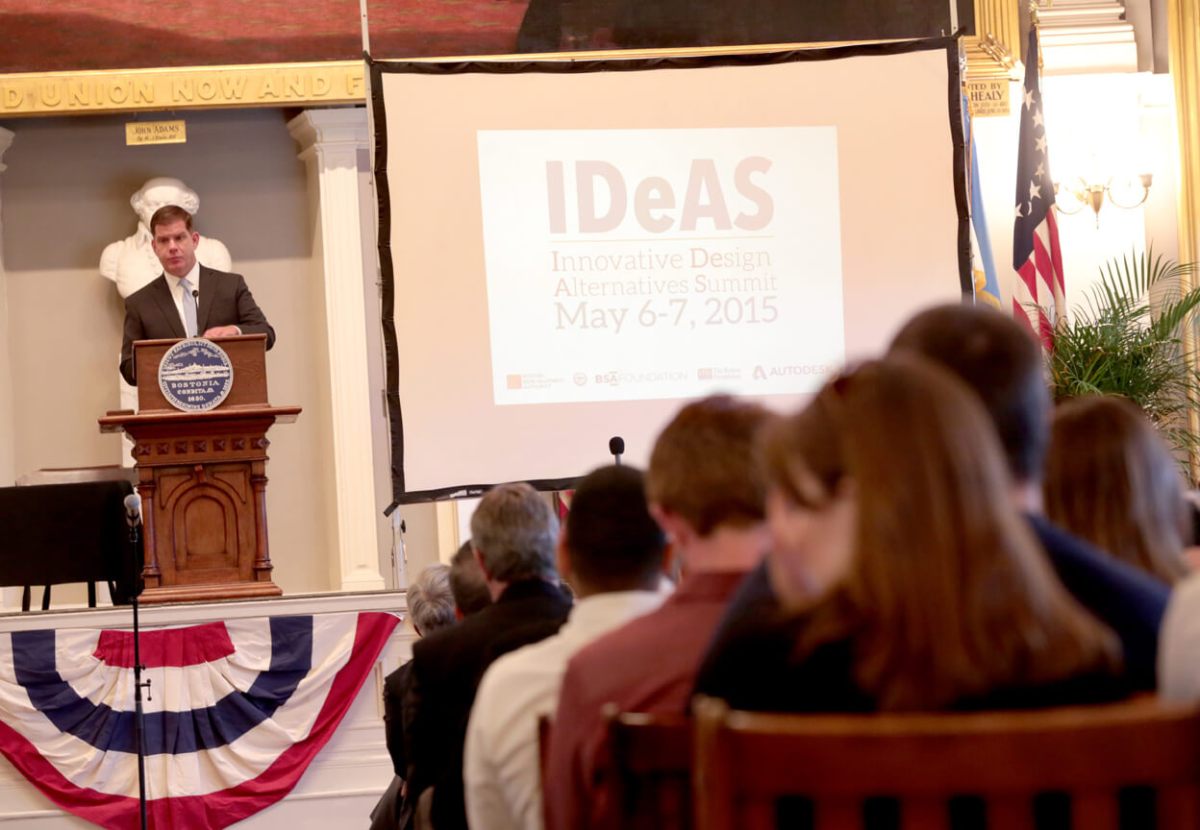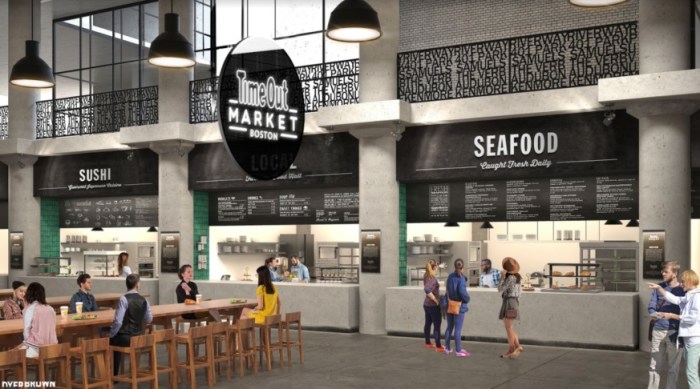Where do you see yourself in 15 years? Mayor Marty Walsh asked the same question to Boston residents Wednesday at the Innovative Design Alternatives Summit, where he kicked off the first citywide planning process in 50 years. Imagine Boston 2030, a two-year public engagement effort, aims to carve out a roadmap to make a more perfect city in time for the city’s 400th anniversary.
“It’s been fifty years since we had a comprehensive plan for Boston,” Walsh said in a video message filmed on top of the Ferdinand Building in Dudley Square. “In 1965, people were looking for the confidence to believe that the city’s decline had ended. Today we’re a thriving, healthy, and innovative city. Now is our chance to set the course for the next generation. I’m inviting you to join us in imagining the Boston of 2030. From economic development to open space, from education to equality, your voice is the key to our success.” With the city’s economy, population and development growing, Walsh aims to jumpstart the conversation on enhancing design and architecture in town through a public forum at www.Imagine.Boston.gov. “We don’t just want to grow bigger,” Walsh said. “We want to grow smarter, more resilient and we want grow more equitably across the city. We need to make sure that while opportunity continues to grow, it needs to be shared. This means closing historic gaps that divide us by race and by gender in our communities and our workforce.” Walsh encouraged residents of all ages and backgrounds from every neighborhood to voice their opinions on what improvements the city should make and what they hope the future will hold. This program looks to weave new and innovative ideas of transportation, housing, education, climate action, arts, culture, aging, and open space usage. The two-year long project will operate in multiple phases of improvement in the appearance and the economic development of Boston. Hundreds attended the summit at Faneuil Hall, where Walsh said that the 400th anniversary is a milestone that innovators and visionaries are aiming to celebrate.
“We want to use the coming anniversary as a timeline that allows us to think about Boston’s future on a historic and global scale while focusing on realistic and tangible goals,” Walsh said.
The baseline evaluations are underway and the city hopes to boost the public input in time for this coming fall, when community members will be encouraged to contribute any and all ideas in shaping Boston to come. These ideas and suggestions will go towards a master plan expected to be completed by summer 2017. “Imagining Boston’s future is something everyone does, and it is time to unity our vision,” Walsh said. “Over the next two years, we will create a plan to solidify that vision and make a reality for every single neighborhood.”
Mayor Walsh introduces Imagine Boston 2030, asks community to share city vision

Nicolaus Czarnecki/Metro Boston


















